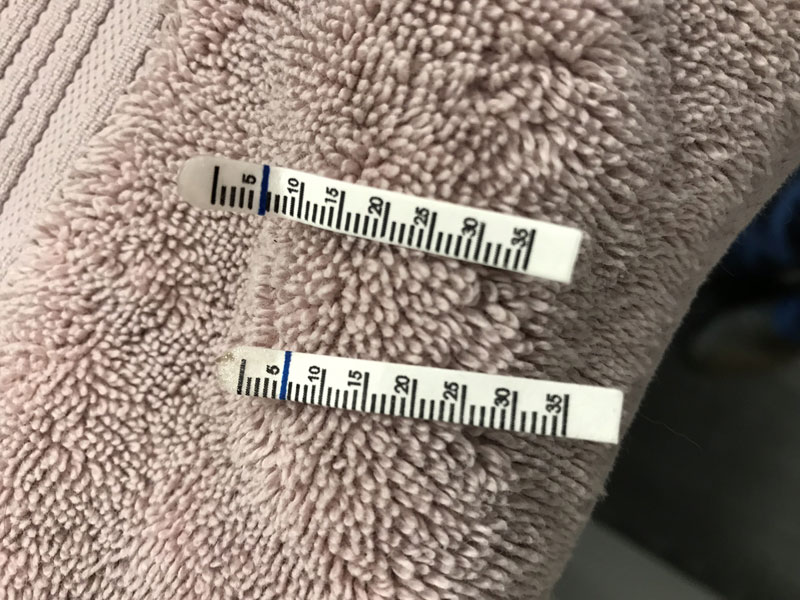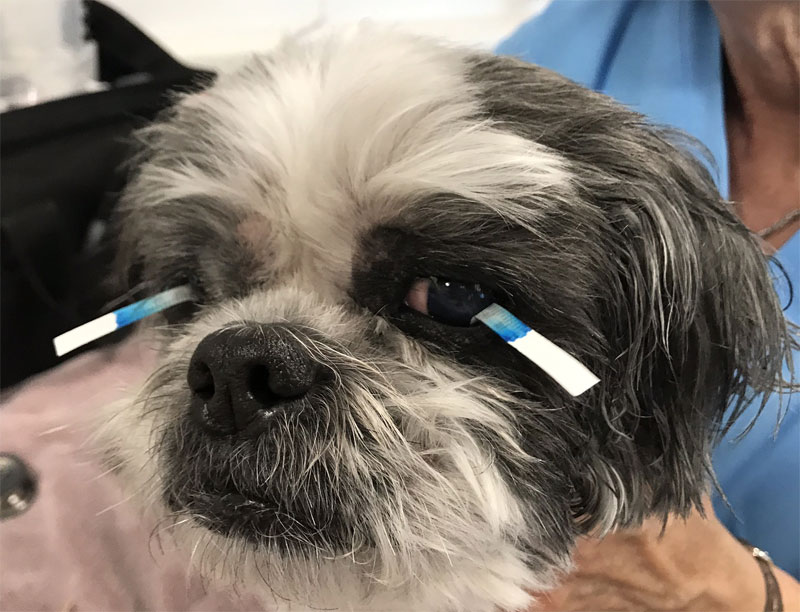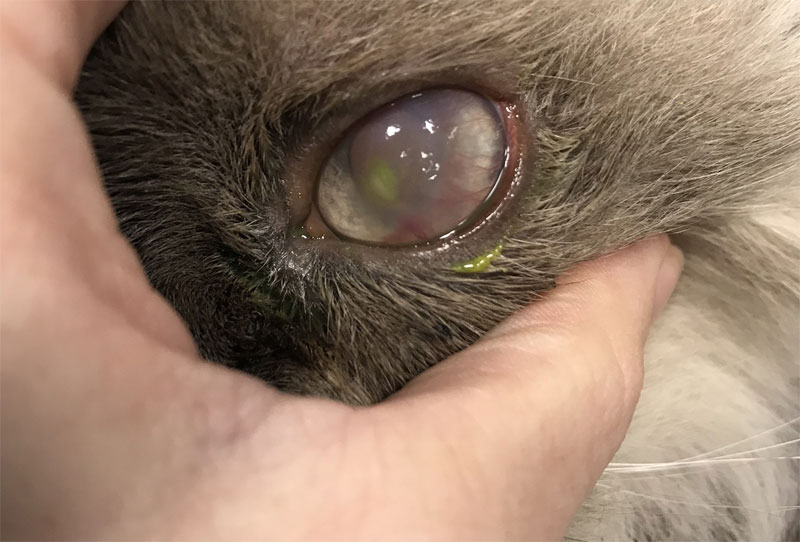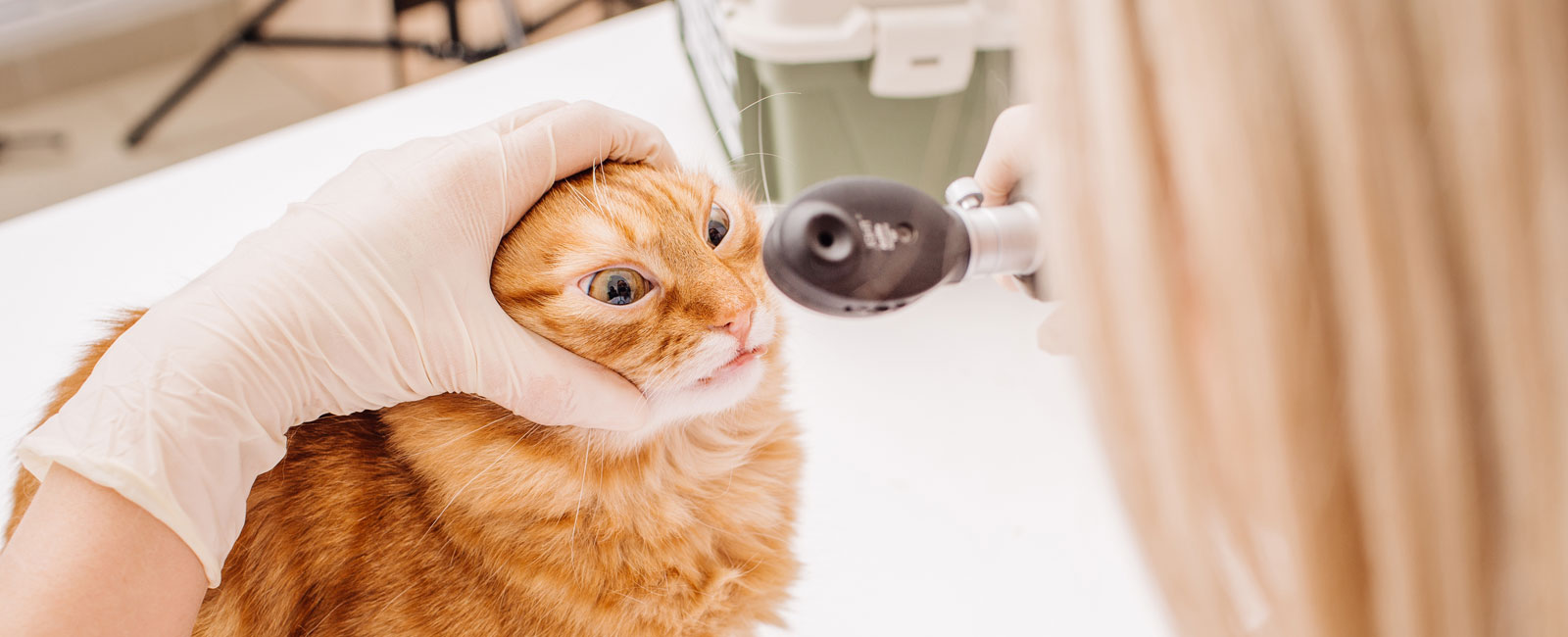
Eyes: windows to the soul
Eyes are remarkable. They are sensitive. They can heal quickly, but they can also deteriorate quickly.
What symptoms should prompt a visit?
- Green or yellow discharge especially if seen multiple times a day
- Redness
- Squinting of any kind: this is a sign of pain!
- Swelling or bulging of the eye
- Trauma to the eye
- Cat scratch to the eye: these are urgent and can be very serious injuries
What diagnostics might help determine how to treat the eye?
Eye pressure reading
This helps to diagnose glaucoma which is very painful and can cause permanent vision loss. Often this can be managed with medicated drops but it is a condition that must be monitored closely.




Tear Testing
This involves putting a small piece of specialized paper in between the eye and the eyelid for 60-120 seconds. The tears will soak up into the paper and tell us if there is sufficient tear production or if your pet is experiencing keratoconjunctivitis sicca, commonly known as “dry eye”. Dry eye is a painful condition that can cause secondary ulcers as well as discomfort in our pets. This condition can be managed with lifelong eye drops.
Eye staining
This involves applying fluorescent stain to your pet’s eye. If there is a corneal ulcer or abrasion, the stain will stick to the affected area, turning it a bright yellow/green color. The stain will also travel down the nasolacrimal duct and may come out the pet’s nose, so don’t be alarmed if/when you see fluorescent green drops! If there is an ulcer present, we must be careful about which types of eye medications we apply as certain medications can actually make ulcers worse!


What type of treatment(s) will we implement?
This depends on what we find with the above testing. It will likely be topical in nature and is usually drops or ointment. We can teach you to apply the medication at your visit.
When do we recheck?
This varies depending on the condition. If we are managing an ulcer or conjunctivitis, it should be improving in 3-5 days and we will often want to recheck in 1-2 weeks depending on the treatment protocol instituted. If it isn’t improving in the time frame discussed or if it’s worsening, we need to recheck. For life long conditions such as dry eye, the rechecks may be more frequent following initial diagnosis and once stable, less frequent. at the beginning and once stable can be a little less frequent.





